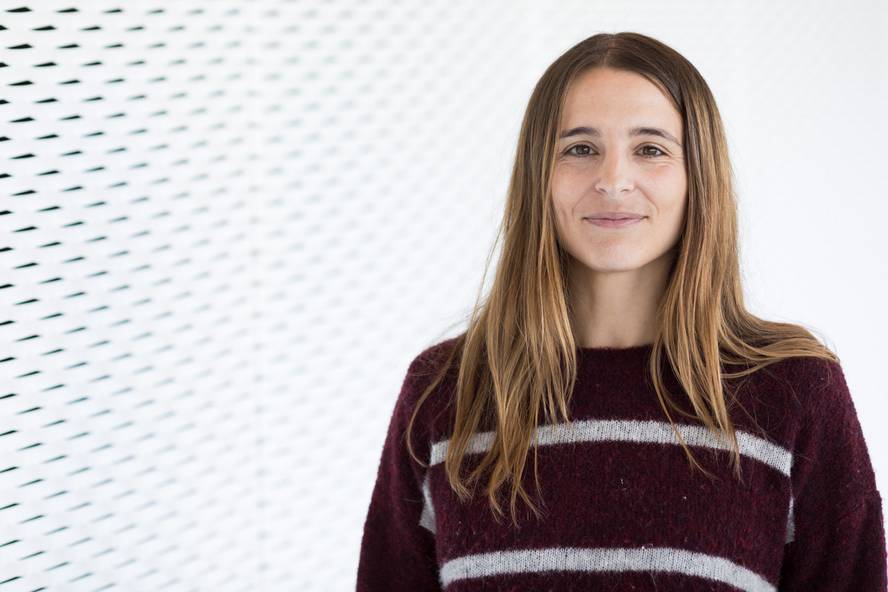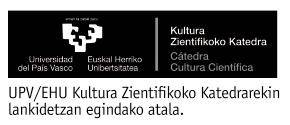“I had the opportunity to get to know first hand what I saw in National Geographic”
Ainhoa Magrach González owes his love for nature and his passion for exploring National Geographic magazine. According to him, in the family there were no researchers, but from a young age he saw fascinated the stories and photos that appeared in the magazine and gave him the desire to live longer.
It is not surprising, therefore, the choice of Biology when starting university studies. However, the first year seemed quite “disappointing” because the subjects they taught did not like him too much: Mathematics, Physics… “Besides the subjects, the way of teaching did not attract me. It seemed that the goal was to learn from memory, but I liked to research, search and find answers on my own,” explains Magrech.
Fortunately, in fourth he found the path he liked. Thanks to a grant he joined the Department of Ecology. “So yes, I felt invented,” he says. And so it seems, because since then he has been working on it: Degree in Biology, Ph.D. in Ecology and Ecology Researcher at BC3 for Climate Change Research.
In the thesis he studied the influence of the fragmentation of forests: “To study the consequences of the division of the forest for activities such as agriculture, construction or industry, I spent almost a year on the island of Chiloé (Chile) collecting samples of birds, mammals and plants,” he recalled.
He explained that his conclusions can be extrapolated to other forests and could prove it, since the postdoctoral research took place in Australia, Borneo and Brazil: “In those places we saw similar models.”
For example, he investigated lianas in Brazil: “As a result of the change in a forest, the number of lianas increases, which has consequences on trees: what species last, what they die, what influence it has on growth… And all this in the rest of the species that live in the forest”.
Two sides of the coin
Magrech has confessed that having the opportunity to investigate all this has been “like a dream.” “Do this: I’ve had the opportunity to get to know first-hand the forest seen in National Geographic. But, at the same time, it has touched me to witness the disaster and that is terrible.” At least, he believes that he has put his grain of sand through research work and communication, to the extent possible.
He has also been in Switzerland, in the ETH. “I did the field work in India. Our goal was that where coffee is grown, they continued to produce, but without losing the forests. Ecosystem services focused on the fact that insects living in the forest (specifically a giant bee) are fundamental in the pollination of coffee. We have been measuring this benefit and when we present the results to the producers we had quite good reception. After all, they know better than anyone the work done by this bee, but when they saw it in numbers they realized that it was really convenient to look after the forest.”
After a couple of years in Switzerland he continued to investigate with pollinators in Doñana. At that time she was pregnant and decided to go a little quieter. According to Magrech, it is not easy to reconcile maternity and research work. “Inevitably as a mother your scientific trajectory slows down and there are not enough measures to compensate for the disadvantage that is generated with respect to other colleagues.”
In any case, you have no intention of being prepared. In fact, he receives a Leonardo grant to investigate the consequence of the loss of a species in a community: “It will be a natural experiment, since there is a hummingbird that migrates between Mexico and Alaska. Therefore, it is introduced and leaves in specific ecosystems and I will investigate the change that this variable produces in the ecosystem”. To do this, she will follow the book from Mexico to Alaska, as the reports she saw in National Geographic.
Born in Berango in 1982. After graduating in Biology at the UPV, he earned his doctorate in Ecology at the University of Santiago de Compostela. Following his research at the Mediterranean Institute of Advanced Studies (IMEDEA), James Cook has worked as a postdoctoral researcher at the University (Australia), ETH (Switzerland) and Doñana (Spain). He is currently in BC3, Leioa, but will soon move to Central America and North America thanks to a Leonardo grant.







